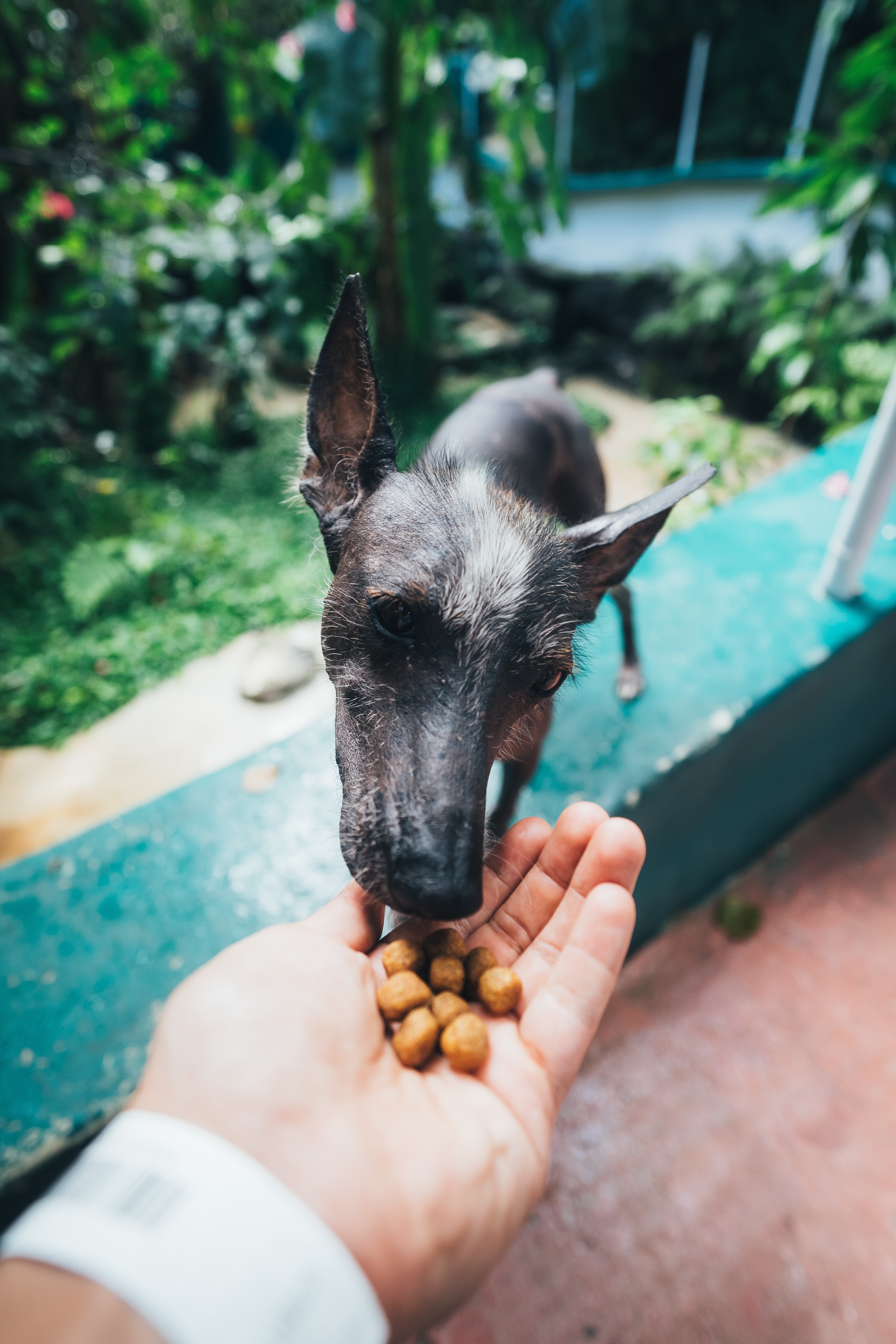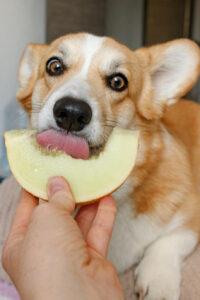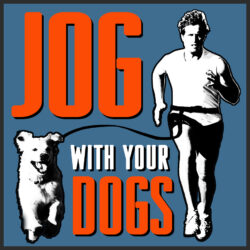
Diet and exercise, right? That’s what they tell us are the keys to good health. You and your dog nailed the exercise part by jogging together – so what about the diet part for your pup?
These days there are an astounding array of dog food choices: dry food, wet food, cheap, expensive, grain-full, grain-free, organic, human-grade, fresh, frozen, home-delivered, home-made, and on and on…
Your dog’s breed, age, and individual needs (like lifestyle, allergies, and food sensitivities) will determine much of their nutritional needs. This article aims to summarize, in the briefest, most concise, layman-talking way, information that may help guide you in the best choices for a healthy diet for your dog.
EAT THIS
Quality protein
As you would assume, quality protein should be the primary ingredient in your dog’s food. Dogs are omnivores and they can eat most vegetables, fruit and grains but meat is their most easily digested and main food source.
How to spot quality protein on those confusing ingredient labels
 Meat vs Meat Meal
Meat vs Meat Meal
As you know, ingredient labels are arranged with the most plentiful ingredient at the top, and lesser ingredients in descending order. On these labels, ingredients are judged by weight before they are cooked.
“Meat” is wet. Usually containing 70% water and only 12% protein. When whole meat is the first ingredient, it’s probably there because of its water weight. When meat is cooked in the extrusion process, the moisture is removed. This means there’s a much smaller percentage of meat in the total makeup of the finished pet food.
Confusing, right?
“Meat meal”, is meat that has already been processed and the moisture has been mostly removed (5ish% may remain). It’s basically been reduced to protein powder and might look like the kind of protein powder you put in a smoothie.
“Meat meal” at the top of ingredients lists, usually would be a more concentrated protein source than “meat” or “whole meat”. It doesn’t sound as nice or healthy for your dog but it can be.
Unfortunately, in the rendering process that makes meat meal, the meat is exposed to extreme temperatures that decrease the nutritional value of the meat. The resulting meat meal is denser in protein – but it’s lower quality protein.
There are some high-quality pet foods that use dehydrated or freeze-dried ingredients that are added after the extrusion process. This minimal exposure to processing keeps the nutritional value much healthier. Here are some add on freeze-dried and fresh meat toppings.
Look for “Named” Meat Protein Sources
Any food, cooked or uncooked, is only as good as the original ingredients. Quality dog food will identify the animal sources and include names like beef meal, venison meal, lamb meal, chicken meal, etc.
Beware of “meal” ingredients that include generic words like by-products meal, (unspecified) meat meal, animal meal, chicken by-product meal, meat, and bone meal. These can be from lower-grade sources like slaughterhouse waste, spoiled supermarket meats, diseased cattle, roadkill, or possibly even dead zoo animals!
The same goes for rendered fat. If you see rendered fat on an ingredients label it should be from known (named) sources. Avoid non-descript terms such as poultry fat, animal fat, vegetable oil, and fish oil. Look for named ingredients such as salmon oil, chicken fat, beef fat, pork fat, and coconut oil.
Other ingredients
Grains (there’s a controversy)
Lately, there’s a debate about grains in dog food. Some dogs don’t tolerate grains well and are better off with a grain-free diet. As this has become more common, vets have detected a correlation between grain-free diets and heart disease in some, not all dogs.
In 2018, the FDA announced a connection between grain-free dog foods and an increased risk of a potentially fatal heart condition. This condition is called dilated cardiomyopathy (DCM). At this time, the theory is unproven and just an alert. If you’re interested in finding out if a grain-free diet is best for your dog read this article.
If you choose to have grains in your dog’s food, know that whole grains are better. Most of the nutrition is in the husk. Oat groats, corn gluten meal, corn starch, and powdered cellulose are grain by-products and are less desirable.
Vegetables and Fruits
Dogs get vitamins and minerals from vegetables and fruits in their food and in the more vegetables and fruits in your dog’s food, the better.
Omega-3 and Omega-6 Fatty Acids
Omega-3 and omega-6 fatty acids are essential acids, which means your dog’s body can’t make them and must get them from food. A dog’s diet must contain these fatty acids. But they have to be in the proper ratio to work effectively together. A ratio of 4 to 1 (Omega-6 to omega-3) is optimal. This article has more info about these fatty acids and how you can supplement your dog’s food.
Omega-6 fatty acids produce inflammation to help boosts the body’s immune system. Omega-3 fatty acids keep the inflammation response in check. Too much omega-6 can cause inflammation, sore joints, poor skin, and possibly allergy symptoms.
Glucosamine and Chondroitin
Glucosamine and chondroitin can help prevent or relieve joint pain.
DON’T EAT THIS
Corn
Corn is very plentiful and cheap so dog food companies often use it as a filler. It has limited nutritional value, many dogs are allergic to it. Corn as an ingredient may be a sign the manufacturer is cutting corners and possibly using other low-quality ingredients.
Wheat
Wheat is another common allergen in dog food.
Soy
Soy is known to cause issues in dogs ranging from gastric distress to hypothyroidism. Read this article for more information about soy as a dog food ingredient.
For more information on other ingredients to avoid in dog food please read this article.
DRY, WET, FROZEN, FREEZE-DRIED?
Dry Food
The benefits: Dry dog food, also known as kibble, has many benefits. It’s the easiest and most commonly used dog food. It’s quick and comes in a range of flavors and is usually the cheapest alternative. Friction from chewing the hard-ish kibble may also help clean the dog’s teeth.
The drawbacks: Kibble is usually packed with carbs, and it’s nutritional value decreases over time. Also, the ingredient labels are often hard to interpret so you must trust the manufacturer.
Wet or canned
The benefits: Wet or canned dog food is the second most popular. It’s quick and ready from the can and is probably more appetizing to your dog than dry food. It’s less processed than kibble which has to go through intense heat in the extrusion process. Canned food has a long shelf life.
The drawbacks: Canned food is that it’s usually more expensive than dry food. It may contain more fat and possibly too much for your dog. It may also have a chemical called BPA which is used in the plastic linings of cans. BPA is linked to cancer and fertility problems. The can may say BPA free on it, or have the recycle designations of 2, 4, or 5. These recycle codes mean the can is BPA free.
Fresh or raw dog food
The benefits: Store-bought raw dog food is closest to the dog’s naturally evolved diet. This diet is fresh, with maximum nutrition and no preservatives.
There are studies that indicate a raw diet can help prevent the development of allergies. This is important because about a third of all dogs develop allergies that can cause itching, excessive scratching, hot spots, greasy or flaky skin, hair loss, and excessive chewing on paws. Dogs with one or more of these symptoms will probably benefit from getting on a raw diet.
The drawbacks: This food may be fatty, expensive, and may have to be kept frozen.
Freeze-dried
The benefits: Freeze-dried dog food is minimally processed with maximum freshness. It was freeze-dried when fresh and can be stored a long time without losing quality.
The drawbacks: Can be extremely expensive.
Home-made?
The benefits: Dogs can benefit from a good home-made meal just like us. If you want advice on how to do this best for your pet you might want to look at Dr. Pitcairn’s Complete Guide to Natural Health for Dogs & Cats
The drawbacks: Much more time consuming.
Organic food
Though I would love to buy organic, I seldom do . I’d like to be sure there are minimal pollutants in my family’s food, but it’s just too darn expensive. We’re getting a kid through college and on a budget. Still, I thought this was interesting information:
Proof of Organic benefits? In a middle school science fair project that was recognized as important by the scientific community, fruit flies were divided into two groups. The flies in one group were fed organic only and the other conventional, non-organic food.
The middle schooler/scientist named Ria Chhabra found that the flies fed organic food lived longer, were more fertile, and handled stress and food deprivation better.
When you buy organic dog food you’re assured it is free of synthetic hormones, pesticides, antibiotics, and preservatives. Also, the ingredients must not be genetically engineered, irradiated, or grown with chemical fertilizers.
High fiber diet
Higher fiber in a dog’s diet can help in many ways. It can help control blood sugar levels, aid in loose stools or constipation and it can help the dog feel full longer just to name a few.
Look for higher fiber ingredients like apples, carrots, sweet potatoes, pumpkin, (whole grain) oatmeal, brown rice, psyllium husk, and flaxseed. High fiber content is considered between 6% – 10%.
These high fiber formulas are usually found in the weight management section. If you’re going to add this to your dog’s diet you must gently introduce it. Sprinkle some on top of your pet’s food for a week. Slowly increase the amount to transition their system gradually.
This article rated high fiber dog foods.
Ways to save $
It’s important to feed your dog the highest-quality food you can afford. Feed your pet quality food and you will have a healthier, more energetic dog – and you may save future money at the vet’s office.
 But we’re all looking to be smart with money, so, if you find a high quality, well-known brand that you like – but don’t like the price, look at the unknown brands next to it. These unknowns are likely generic brands from the well-known quality brand. Sold at a lower price point so that company can be in the market at all levels, but sold under a different name so as not to cheapen their quality brand. Companies tend to buy shelf space in a block and keep their products together.
But we’re all looking to be smart with money, so, if you find a high quality, well-known brand that you like – but don’t like the price, look at the unknown brands next to it. These unknowns are likely generic brands from the well-known quality brand. Sold at a lower price point so that company can be in the market at all levels, but sold under a different name so as not to cheapen their quality brand. Companies tend to buy shelf space in a block and keep their products together.
To read more about vet-approved ways to stretch your hard-earned dollars read this.
Don’t forget to Ask the Pros
Hopefully, this article helps to demystify some things about dog food choices today. Remember, you should always consult your pet’s vet for diet information. You can also find more information about dog food on the AAFCO website (The Association of American Feed Control Officials).
Resources:
http://www.dogfoodproject.com/index.php?page=meat-meal
https://www.prodietpet.com/meat-vs-meal
https://stayloyal.com.au/meat-versus-meat-meal-in-dog-food/
https://blog.homesalive.ca/the-best-kind-of-protein-for-dogs
“The Shocking Truth About Commercial Dog Food“.


Having a 6 month puppy in the house has led to me and my human looking at all these weird and wonderful options. Our Rey is currently on a mix of cheap kibble and a slightly more expensive meat option mixed in to balance things out. I don’t know if there’s a problem mixing quality and cheap but it seems to keep her happy. Moms Sheba (a sheepdog now 17 years young) has been picky about food all her life, gets bored of one and refuses to eat it, ma keeps having to change brands to keep her happy. Is that normal?
Hi Kelly, From my experience with dogs “normal” is a relative term. They all have their own personalities and likes/dislikes. Sheba must be a picky eater like my Lily. I’ve found that some dog’s I’ve been lucky enough to care for function best on a steady diet of the same thing. Their tummy doesn’t get upset that way. Other dogs get bored with a strict, consistent diet. They might love a meaty beef dish one night and ignore it the next. As far as cheap kibble with quality wet food – I think that’s perfect. They say the kibble helps clean the teeth. I’m sure you enjoy the richness your dogs bring to your life as much as I do… even if they take a little work to figure out.